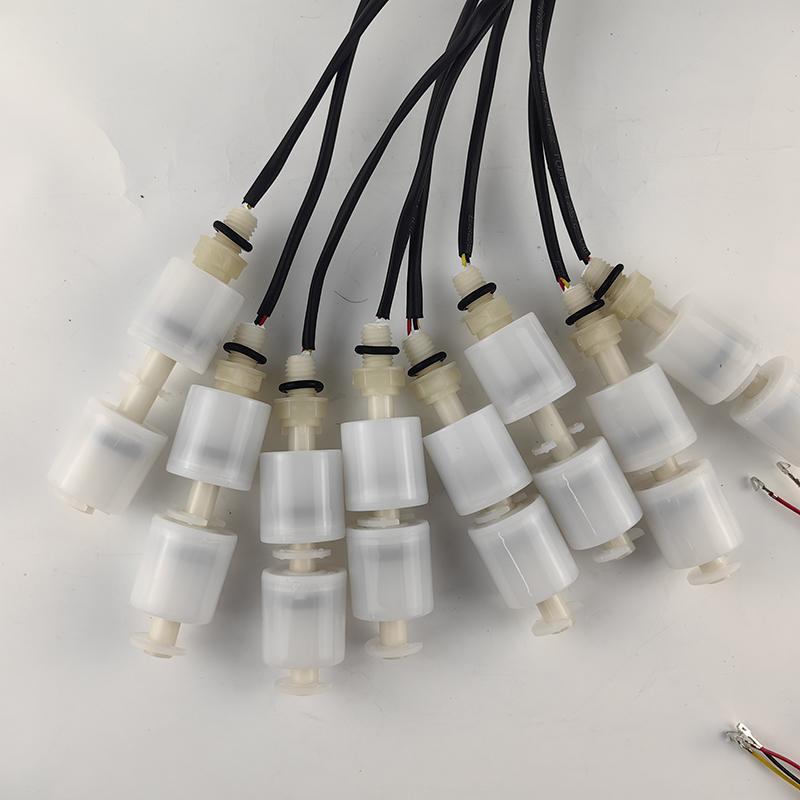Parameter description: 85mm length PTFE liquid level switch with dual floating balls and dual liquid levels. Three wires, black, red, yellow, and a common black wire, for low and high liquid levels.
1x Secondary Ink Cartridge 1.5x Secondary Ink Cartridge 2x Secondary Ink Cartridge 4x Secondary Ink Cartridge 10x Secondary Ink Cartridge Accessories, Ink Detector Liquid Level Mechanical Monitoring
Double floating ball, high liquid level, low liquid level, normally closed type, normally open type, liquid level switch, length 85mm, inkjet printer, photo studio, Nage KUNAG

The parameters of PTFE level switches may vary depending on different models, manufacturers, and application scenarios. Here are some common parameters:
1. Measurement range: The liquid level switch can effectively detect the upper and lower limits of the liquid level, ranging from a few millimeters to a few meters.
2. Working voltage: refers to the power supply voltage required for the normal operation of the liquid level switch, commonly including DC 12V, 24V, AC 220V, etc.
3. Switch types: There are usually two types: normally open (NO) and normally closed (NC). The normally open type opens the contact when the liquid level does not reach the set value, and closes when it reaches the set value; The normally closed type is the opposite.
4. Switch capacity: Refers to the maximum current and power that the liquid level switch can control, such as 5A, 10A, and corresponding power, such as 50W, 100W, etc.
5. Response time: Refers to the time required for the liquid level switch to respond and switch contact states when the liquid level changes. Generally measured in milliseconds (ms), the shorter the response time, the more sensitive the detection of liquid level changes.
6. Accuracy error: The allowable error range between the actual measured value of the liquid level switch and the true liquid level, usually expressed in units such as percentages or millimeters, such as ± 2mm, ± 5%, etc.
7. Repeatability: Under the same conditions, the consistency of the measurement results when the liquid level switch measures the same liquid level multiple times is generally expressed in percentages or millimeters.
8. Working temperature: The temperature range in which the liquid level switch can operate normally, such as -20 ℃ to+80 ℃.
9. Working pressure: The liquid pressure that the level switch can withstand, usually measured in kilograms of force per square centimeter (kg/cm ²) or pascals (Pa), such as withstand pressures of 5kg/cm ² and 20kg/cm ².
10. Material: In addition to Teflon (polytetrafluoroethylene) used for parts in contact with liquids, it also includes materials such as stainless steel, plastic, etc. for the shell, connecting components, etc., to adapt to different working environments and medium characteristics.
11. Protection level: It indicates the dustproof and waterproof capabilities of the liquid level switch. Common protection levels include IP65, IP67, etc. The higher the number, the better the protection performance.
12. Probe length: For immersion level switches, the length of the probe inserted into the liquid needs to be selected according to the specific installation position and liquid level measurement requirements.
13. Connection methods: such as threaded connection (common specifications include M10, M16, NPT, etc.), flange connection, welding, etc., to ensure reliable connection between the liquid level switch and the container or pipeline.
14. Output signal: Some level switches may output analog signals (such as 4-20mA) or digital signals (such as relay outputs, communication protocol outputs, etc.) for integration and communication with other control systems or devices.
Contact: peng gong
Phone: 18918462396
Tel: 021-59718851
Email: kunage@126.com
Add: Lane 819, Qinghewan Road, Qingpu Industrial Park, Qingpu District, Shanghai